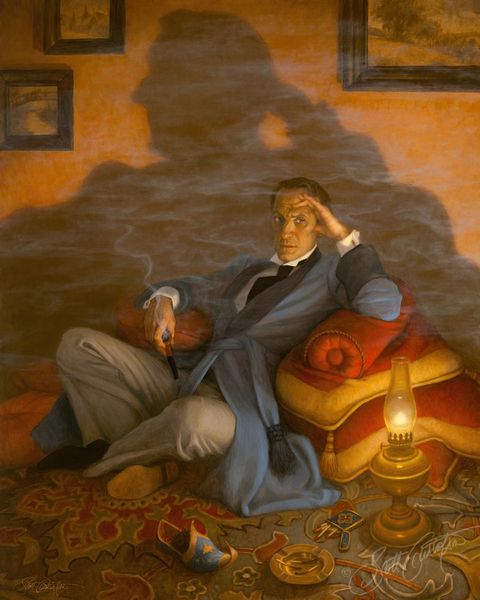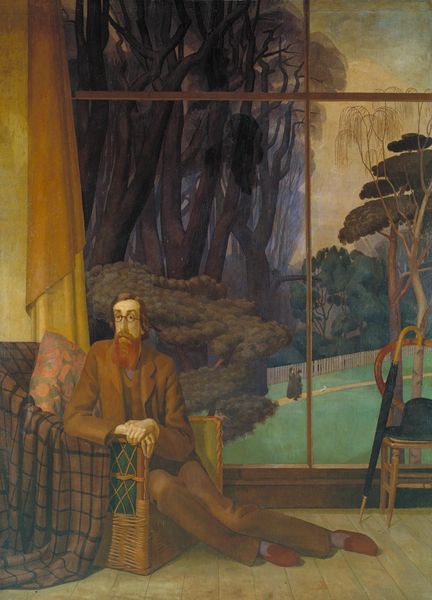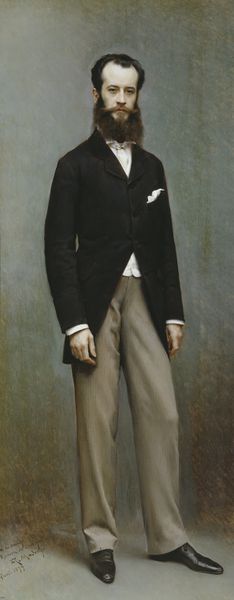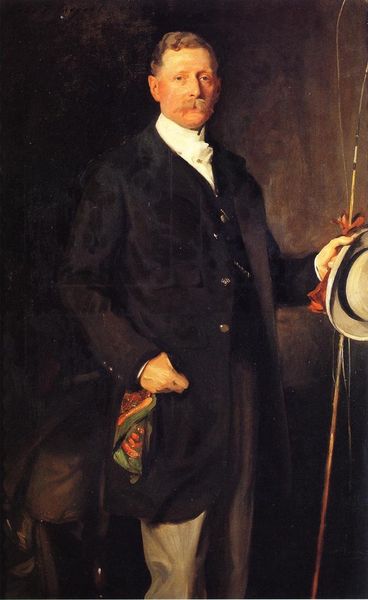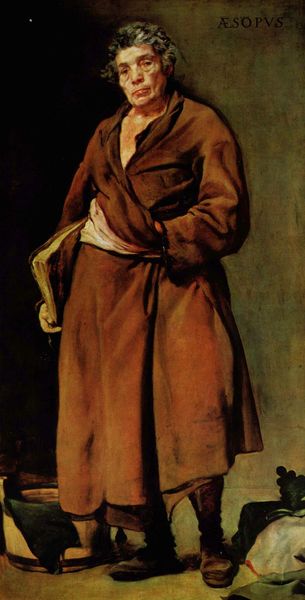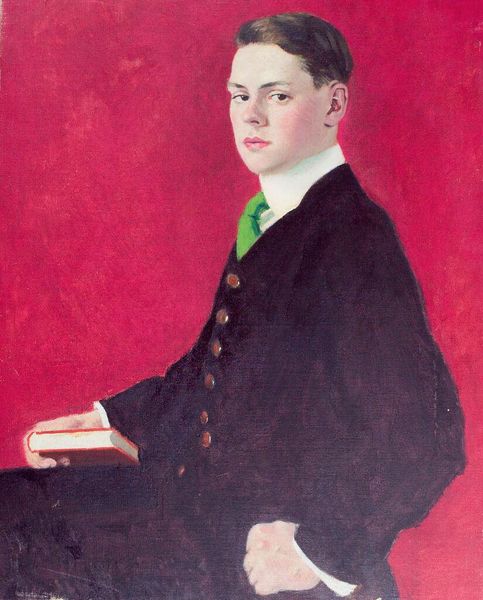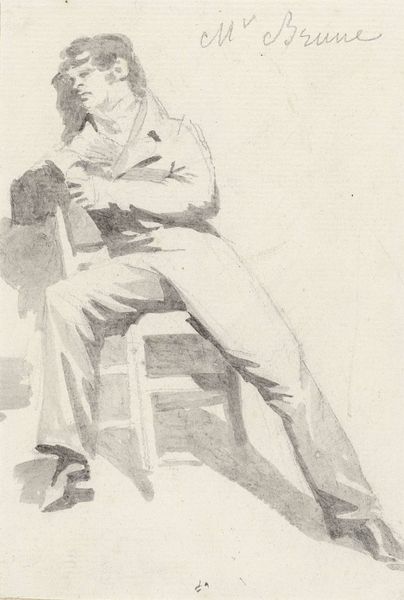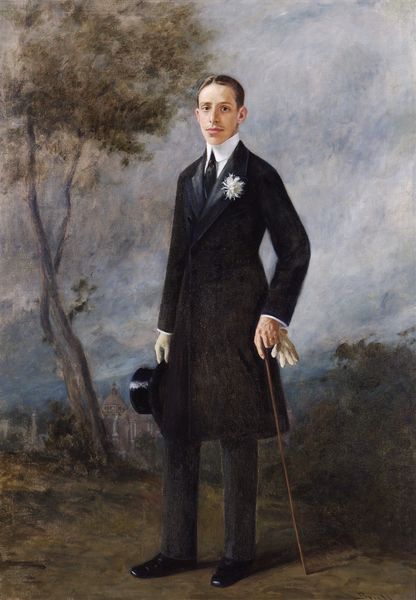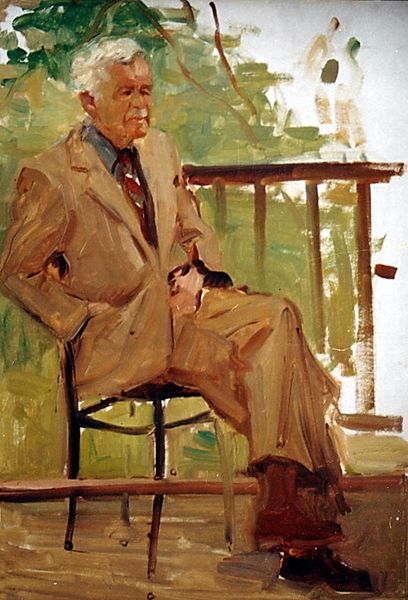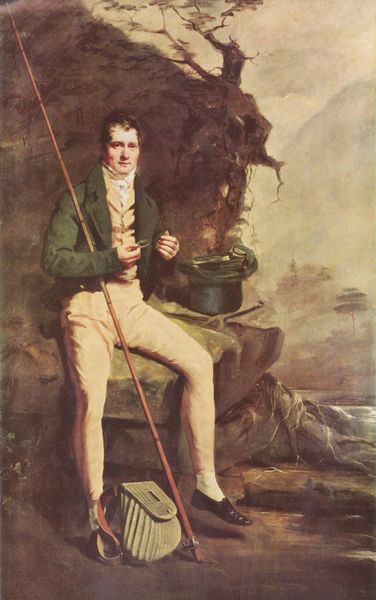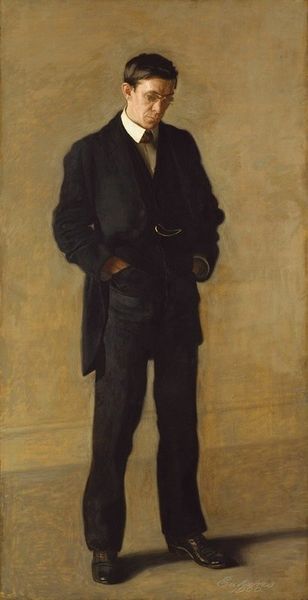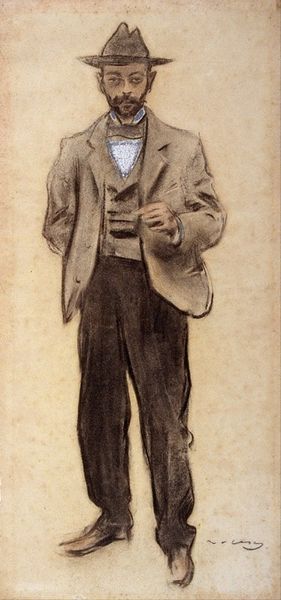
painting, oil-paint
#
portrait
#
painting
#
oil-paint
#
landscape
#
genre-painting
#
italian-renaissance
#
modernism
#
realism
Copyright: Antonio Donghi,Fair Use
Curator: Welcome. We’re standing before Antonio Donghi’s painting, "The Hunter." Observe its somber tones and quietly powerful composition. What’s your immediate reaction? Editor: A very austere mood. The palette of browns and yellows feels somehow oppressive. Is it me, or does this scene have a palpable tension? Curator: Tension, yes, in the stillness. Note how the artist uses a restrained color palette—earth tones dominated by browns and yellows—to emphasize structure. The vertical lines of the rifle and chair legs play against the horizontality of the table. Editor: The dog also looks tense and submissive; it seems the man exercises a patriarchal power over this hunting ground and the non-human animal under his dominion. It invites uncomfortable questions about humans’ relationship with nature. Curator: Intricate questions of naturalism certainly exist, but note the artist’s employment of realism to depict surfaces—fabric, fur, wood. How the forms are built with subtle variations of tone rather than harsh contrasts. There is no romanticism here, only the direct presentation of surfaces. Editor: And who exactly is this hunter? The crisp, neatly pressed clothes don’t exactly signal rugged outdoorsman, do they? Rather, they represent a rising class in a period defined by societal anxieties around urbanization, class identity, and the control of natural resources. He seems out of place here, yet defiant in claiming space, land, and life. Curator: These tensions, as you observe, are essential. The meticulous application of paint and balanced composition produce an artwork far richer in its contemplation of form than might be initially evident. Editor: By examining the symbolism, we expose how the mundane – here, an everyday scene – encapsulates the bigger historical framework of power structures. We unveil silent, unsettling conversations about how identity, societal dominance, and environmental agency interconnect. Curator: Precisely. Donghi makes us see not only what is present but asks that we meditate on what it signifies formally. Editor: This contemplation reveals art’s intrinsic ties with our social fabric, demanding an ongoing, urgent assessment of ethical representation. Curator: Indeed, making each viewing its own, unique experience. Thank you for adding such depth. Editor: Thank you. It’s always an exercise in broadening perspective, hopefully for us all.
Comments
No comments
Be the first to comment and join the conversation on the ultimate creative platform.


